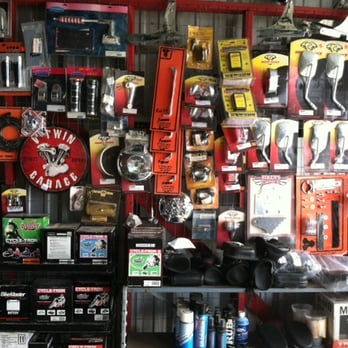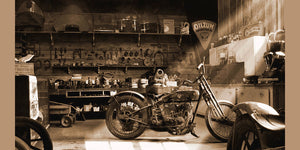Mastering Bike Gears: Just How to Enhance Your Riding Experience
In the world of motorcycling, grasping the art of equipment control is crucial for enhancing your riding efficiency. Correctly understanding and using motorcycle gears can considerably influence acceleration, gas, and control performance, transforming an average trip into a smooth, exciting journey.
Recognizing Gear Mechanics
Exactly how do the details of gear auto mechanics influence motorbike performance? At the core of bike dynamics, equipment technicians play a pivotal duty in transforming engine power right into activity, ultimately determining speed and control. Gears, thoroughly crafted elements, enable riders to maximize torque and rate, making sure a seamless change via different surfaces and speeds. The gear ratios, very carefully created, determine the partnership in between engine transformations and wheel turns, affecting velocity and gas effectiveness.
Comprehending gear technicians begins with recognizing the relevance of the gearbox, which houses multiple equipments of varying dimensions. These equipments engage via a process called meshing, where teeth of various equipments involve to transfer power. The precision of this communication is critical; any kind of misalignment or damages can cause ineffective power transfer, hindering efficiency. Additionally, the arrangement and dimension of equipments influence the motorbike's capability to take care of different loads and speeds.
Additionally, the idea of equipment shifting is integral to optimizing performance. Prompt and smooth changes make certain that the engine operates within its ideal power band, stopping unneeded pressure and enhancing longevity (motocross gear). By understanding these mechanical complexities, cyclists can achieve a harmonious mix of efficiency, power, and control, elevating their riding experience
Timing Your Changes
Shift timing mastery is necessary for optimizing motorcycle performance and boosting the riding experience. Correctly timed shifts make sure that the engine operates within its optimal power band, which is critical for maintaining control, achieving smooth acceleration, and making certain the longevity of the motorcycle. Riders should establish an user-friendly feeling of when to move equipments, which includes comprehending the connection between engine changes per min (RPM) and speed.
To grasp shift timing, pay very close attention to the engine's audio and feel, as these supply important clues about when to change gears. The excellent shift factor generally occurs when the engine approaches the upper variety of its power band without getting to the redline. Shifting prematurely can cause a lack of power, while shifting too late may trigger unneeded engine strain
Additionally, road conditions and riding design influence change timing. In comparison, during highway riding, less changes at higher rates can be a lot more ideal.
Enhancing Fuel Effectiveness
While understanding motorcycle gears is critical for performance, improving gas performance is equally crucial for both environmental and economic reasons. Ideal gas intake not only decreases functional prices yet also reduces the environmental impact of riding. To attain this, one have to understand the elaborate partnership between gear selection and engine performance.
To start with, choosing the appropriate equipment at proper rates can significantly influence gas usage. Riding in a higher equipment at reduced rates can cause engine hauling, which is harmful to both gas economic climate and engine health. Alternatively, riding in reduced equipments at high speeds results in unneeded fuel intake. Hence, maintaining an optimum balance by changing gears abreast with road conditions and my latest blog post expected maneuvers is crucial.
In addition, normal maintenance plays a pivotal function in fuel effectiveness. Making sure that the bike is well-tuned, with tidy air filters and properly blew up tires, can enhance aerodynamics and decrease fuel wastage. Furthermore, taking on a riding style that welcomes progressive acceleration and smooth slowdown can add to better gas economy.

Techniques for Smooth Transitions
Attaining smooth equipment changes is essential to improving the riding experience and ensuring the longevity of a bike's transmission system. Correct equipment moving not only adds to a seamless experience however also minimizes wear and tear on the mechanical elements. To understand the art of smooth shifts, bikers must concentrate on a couple of vital methods.

Secondly, clutch control plays a critical duty. Involving and disengaging the clutch efficiently requires method. The clutch lever should be launched slowly, permitting a smooth transfer of power from the engine to the wheels without creating a jolt or sudden motion.

Adjusting to Roadway Conditions
Browsing diverse roadway conditions is a critical ability for any kind of motorcyclist intending to keep control and safety. Whether you're riding on damp surfaces, crushed rock roads, or navigating doglegs, your capacity to adapt your gear usage and riding Going Here method is vital. Recognizing how to change your equipments properly can substantially influence traction and security, ensuring a safer trip.
On wet roadways, mens leather motorcycle gloves it is recommended to keep higher equipments to minimize torque and minimize wheel spin. This approach helps keep hold on unsafe surfaces, enabling smoother velocity and deceleration. In comparison, when riding on crushed rock or irregular terrain, lower equipments are better. Reduced equipments offer much better control and enable you to react more quickly to unanticipated adjustments in the road surface.
Sharp curves demand accurate equipment administration to balance rate and control. Downshifting before getting in a curve can help keep momentum while making certain the motorbike remains stable throughout the turn. Regular practice in varied conditions boosts your ability to forecast and respond to changes in roadway texture and slope.
Final Thought
Mastering motorcycle equipments considerably enhances the riding experience by improving velocity, control, and fuel effectiveness. Adjusting gear choice to numerous road conditions, such as using higher gears on wet surfaces and lower equipments on crushed rock, further improves handling and safety and security.
Comprehending equipment technicians starts with identifying the importance of the transmission, which houses several gears of varying sizes. These equipments engage with a procedure known as meshing, where teeth of different equipments involve to transmit power (motox parts nz). Mild changes to the throttle during gear shifts can avoid jerky motions and maintain a constant riding speed
Whether you're riding on wet surfaces, crushed rock roadways, or browsing sharp turns, your capacity to adjust your gear use and riding strategy is extremely important. Adjusting gear selection to numerous road problems, such as using higher equipments on damp surface areas and reduced equipments on gravel, additional improves handling and safety and security.